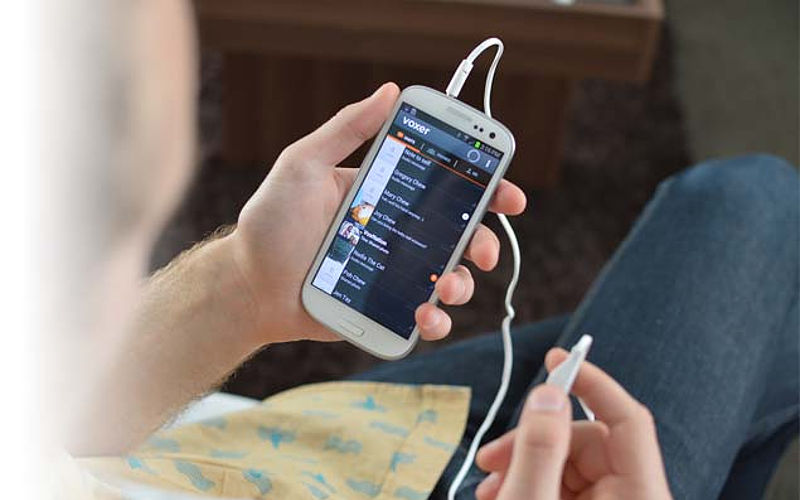The world is not as large and vast as it once seemed. Thanks to the advent of mobile communications and the continued growth of the smartphone market, connecting to your friend across the world is now about as easy as connecting to someone standing or sitting in your own backyard. As the industry continues to evolve, certain expectations, such as those for quality and speed, become even higher.
We had the opportunity to speak with Irv Remedios, head of products at Voxer, about the company’s outlook for the mobile push to talk industry in 2014.
From a product perspective, Voxer thinks about the mobile push-to-talk industry in three specific areas, the first of which is the very concept of instant voice and being able to use it across different platforms.
Instant voice across platforms
“Connecting via voice gives users and experience that is unlike receiving a message via text … it also allows users to be more productive.”
“Instant voice capability on mobile phones, tablets, websites, and other devices” is “very intriguing,” Remedios said. Connecting via voice gives users and experience that is unlike receiving a message via text. It’s more personal, of course, but it also allows users to be more productive across a variety of industries and in their personal lives by being able to utilize push to talk for things such as customer support and making appointments. Utilizing voice can result in a “reduction in waiting time” when used with a variety of applications such as a customer support IVR.
Unlocking rich data for improved experiences
“Unlocking data” is the second focus point for Voxer as it continues to evolve its walkie-talkie product. Being able to utilize live communication with streaming audio across networks with low latency is very important, as is being able to save voice messages for later use. Rich information, such as that relating to order information or customer support, can be utilized in various ways to ensure higher accuracy and more detail at a faster pace.
Making information available in other systems for businesses is very key.
Making this information available in other systems for businesses is very key, as it provides a streamlined experience where the rich data can be accessed in one place at once, providing useful features such as unified automated alerts all in one application. This is directly tied to cost — and therefore revenue — for businesses.
Consumerization of BYOD
The “consumerization of BYOD” is the third area in which Voxer maintains its focus. BYOD (Bring Your Own Device) has become a major selling point for businesses and continues to grow at a high rate. For service providers like Voxer, this introduces the consideration of being able to connect across different types of devices — not just mobile — to different networks and geographies around the world. The expectation customers have is for services to be able to work on virtually any desktop, tablet, and smartphone device they wish to utilize while still maintaining high performance, simplicity of use, and low latency to keep them connected.
It’s called living in a virtual workforce. PTT-like solutions are used in different industries that utilize BYOD, and the continued expansion of this virtual workforce introduces challenges to the industry to keep customers connected instantly, especially when dealing with small or large companies that need to coordinate a workforce of varying sizes across different locations.
The continued expansion of this virtual workforce introduces challenges to the industry to keep customers connected instantly.
Whether it’s a truck driver using a tablet on the road or an executive looking to stay connected to the office while overseas, BYOD introduces expectations that “did not exist three or five years ago” according to Remedios. Customers nowadays — whether they’re associated with businesses or utilizing services for personal use — expect high performance. As the BYOD trend continues to popularize, the expectation is that services should be able to maintain the quality and performance over any device they’re used with, be secure, and be accessible with the touch of a button.
Voxer intends to focus on both businesses and consumers equally, delivering instant voice capability for both while maintaining security and data retention features that businesses require and consumers are less concerned with. BYOD will continue to be a major focus though it all, as it’s this group, Voxer says, that will keep mobile PTT moving and expanding into the future, through 2014 and beyond.

